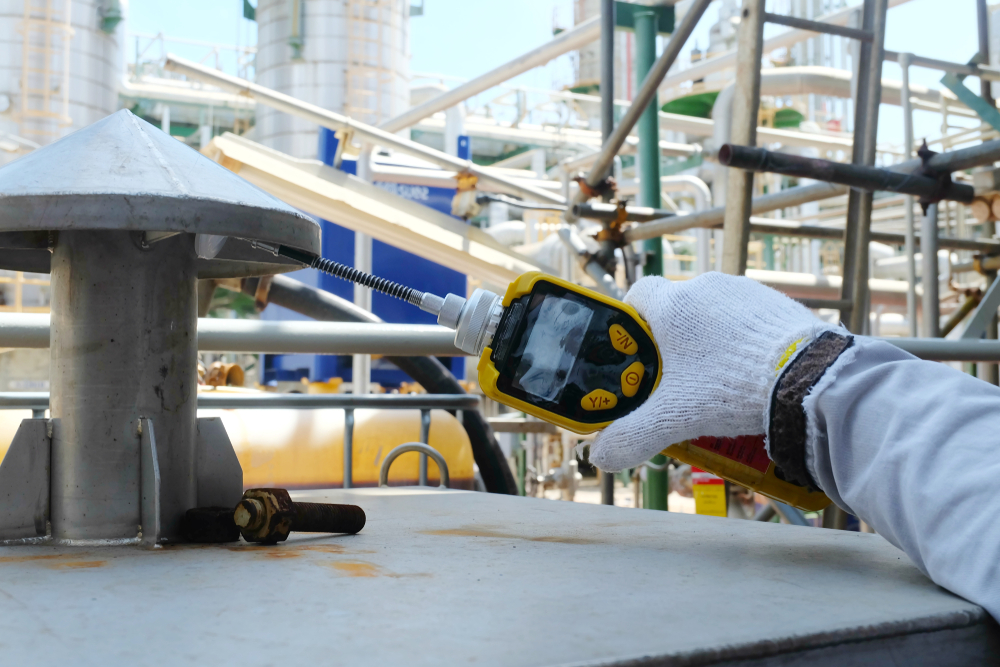I recently had a coworker ask about a conversation he’d had with a potential client. The client wanted to test for VOC (Volatile Organic Compounds). [Quick aside: I apologize for all the acronyms, but you cannot work in the world of stack testing without running into them, running over them, and occasionally being completely befuddled by one you’ve never seen.] He wanted to know what was “standard practice” for that kind of testing. I chuckled to myself; he was entering a world that was less decision tree and more decision bush, or decision labyrinth (with the local agency playing the role of minotaur).
In order to properly test for VOCs, (at least) four questions need to be answered before determining what would be “standard practice.”
- Why are you looking for VOCs?
- What compounds are you looking for?
- What levels are you expecting to see? What levels do you need to see?
- What type of process are you going to test?
Let’s look at each of these in more detail.
1. Why Are You Looking for VOCs?
The primary reason for VOC testing is that EPA or another agency requires it through a permit. Permits often specify what methodology to use, what compounds to look for, and what the required detection limits are. Depending on the permit, a facility may be asked to provide emissions rates, emission factors, destruction efficiency, control efficiency, or something else entirely. A permit will often cite methodology, but there are often questions that remain. EPA Method 25A, a method geared towards the compliance world, may require a response factor and Method 18 is a decision tree in and of itself. A permit may define the methodology, but applying that method correctly is key.
Beyond the regulatory drivers, VOC testing may be done to improve process efficiency, reduce fuel costs of an RTO (Regenerative Thermal Oxidizer), or to grab a baseline prior to installing a pollution control device. When testing is for non-regulatory reasons, a client may need real-time measurements, lower detection limits, or a more flexible testing approach.
2. What Compound are You Looking for?
Surprisingly, clients rarely know the answer to this question. To properly select a VOC testing method, I need to know what I’m looking for and what type of gas stream it is in. Is it soluble? Is it sticky? Is it unstable? Is it deadly? Can it be collected in a summa canister, a Tedlar bag, or a sample train? Can I see it with GC (Gas Chromatography) or is the FTIR (Fourier-Transform Infrared Spectroscopy) or MS (Mass Spectroscopy) viable options? Different compounds can be detected using a variety of methods, knowing what is in a gas stream will improve the test program by helping to select the proper methodology for finding the compounds of interest. Alternatively, if this question remains unanswered, a pre-screening or evaluation of process input may provide valuable insight.
3. What Levels are You Expecting to See? What Levels Do You Need to See?
Those two questions may seem the same (and often are), but there are good reasons to ask both questions. It is often acceptable just to know a compound is below a set limit without quantifying down to the ppt (parts per trillion) level when a permit is involved. However, destruction efficiency is hard to calculate if there are less than signs (non-detects) in both halves of the equation, in which case lower detection limits may be required. It’s worth noting that emission levels can change based on the process as well. Is there makeup air? Is it variable? Is the system steady-state? Is it continually venting? A changing gas flow rate can make quantifying certain compounds difficult. Knowing what detection limits are required to meet the permit requirements, design specifications, or engineering goals will help determine what VOC testing approach is appropriate.

Agencies are asking for lower and lower emission measurement levels which means that traditional approaches may require modifications or fine tuning and opens the door for advanced sampling systems.
4. What Is the Process Being Tested?
Will it be hot, pressurized, or ambient? Is there high moisture? What else is in the gas stream outside the compound(s) of interest? Will it interfere with the targeted compound? Is it deadly for the stack tester (this happens more than you’d think)? Is it variable with respect to time? Some methods provide a single data point for the duration of a run while others allow me to gather real-time data. Each of these answers will help to narrow down the VOC testing options and keep the test crew safe.
If you’re confused by this, know that you are not alone. I know my co-worker was a little baffled, and probably still is. There are a lot of variables to sift through and questions to ask. There is not a one-size-fits-all solution to VOC testing. It is important that people performing these tests take the time to determine the proper sampling and analytical methodology to get appropriate detection limits, perform the test safely, and provide quality data that meets your needs.
The author of this blog post has been in the stack testing field for over 15 years and the Team Leader for CleanAir’s Emission Measurement Group. For more information regarding VOC testing or other stack testing, contact Scott Lehmann at slehmann@cleanair.com.







